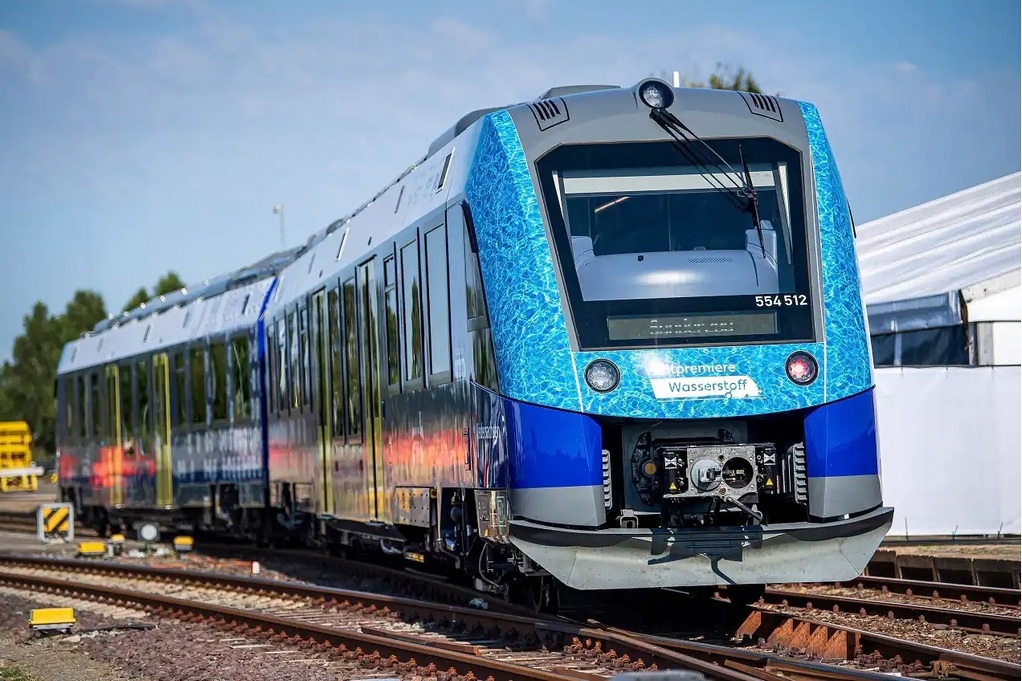Germany’s state-owned, $85 million hydrogen fuel-cell powered train system is shuttering almost exactly one year after its first public debute in August 2022. This doesn’t mean that the railways are reverting back to pollutant-spewing diesel engines, however. According to the country’s Ministry for Economic Affairs, Transport, Building and Digitisation, the lines will transition to electric battery-driven systems that are simply “cheaper to operate.”
Germany’s LVNG railway company first started planning diesel train phaseways all the way back in 2012, and began testing hydrogen fuel-cell trains in 2018. For years, the transition process in the Lower Saxony region was plagued by delays and logistical issues, such as retrofitting existing trains with the proper hardware and software.
At the time of its official rollout in August 2022, Stephan Weil, Minister-President of Lower Saxony, declared the project to be a “role model worldwide [and] an excellent example of a successful transformation made in Lower Saxony.” Weil added that, “As a country of renewable energies, we are thus setting a milestone on the way to climate neutrality in the transport sector.” By the end of the year, however, a state-commissioned study determined that hydrogen trains could be as much as 80 percent more expensive than other electric options. Last week, LVNG finally pulled the plug on its hydrogen fuel-cell plans.
Germany is still moving aggressively to address these issues while also attempting to maintain its goal to phase out all diesel trains by 2037. By decade’s end, for example, Lower Saxony officials plan to introduce 102 battery-electric trains alongside another 27 lines powered by catenary systems—overhead electricity lines that allow for constant power.
It’s unclear if or how Germany’s shift in railway plans could affect the many other hydrogen fuel-cell train projects across the world. Last year, for example, California approved over two dozen hydrogen trains, while Italy earmarked €300 million ($330 million) to convert many of its diesel trains to hydrogen power.
Other travel industries are also still steadily pushing forward with their own hydrogen plans. Over the summer, two US-based startups have conducted successful test flights of prop airplanes retrofitted to partially run on hydrogen fuel-cells. According to a recent report from the International Council on Clean Transportation, such retrofitted planes could generate as much as one-third less CO2 over its lifetime compared to green alternatives such as “e-kerosene” composed of carbon dioxide, water, and electricity.
Tags: electric, Hydrogen, LVNG, Train



Recent Posts
PIL Conducts First Simultaneous Cargo and LNG Bunkering in Singapore
NYK Takes Delivery of LNG-Fuelled Capesize Bulker SG Dawn
Swire Shipping joins Achilles Maritime Network to strengthen supply chain sustainability and compliance
L&T Open to Minority Stake Sale in Green Hydrogen and Ammonia Projects
Government Briefs Parliament on Oil, Gas, and Alternative Fuel Projects
Angola’s NVS Targets Green Methanol Production for Multiple Sectors
CBH Group Trials Biofuels to Cut Maritime Emissions in Grain Exports to Europe
Grimaldi Group Takes Delivery of Ammonia-Ready PCTC Grande Tianjin